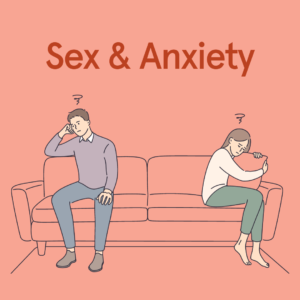Despite therapy and the use of medications, we occasionally find that the effects of a mental health disorder persist in some people. For these individuals, brain stimulation therapies like transcranial magnetic stimulation (TMS) may provide relief from their symptoms. TMS may also be an alternative for those who cannot tolerate mood stabilizing medications.
The National Institute of Mental Health (NIMH) reports that TMS and other brain stimulation therapies “involve activating or inhibiting the brain directly with electricity.” TMS is the most noninvasive of these treatments and is given via energy pulses that are generated by an electromagnetic coil held near or against the person’s head.
Because these magnetic pulses are given over and over in a repetitive rhythm, the most technically correct term for TMS is repetitive transcranial magnetic stimulation (rTMS).
What Is Transcranial Magnetic Stimulation Used For?
In 2008, the Food and Drug Administration (FDA) approved repetitive transcranial magnetic stimulation to treat major depressive disorders and their associated cases of severe depression and anxiety. It has also been studied as a therapy for psychosis and researchers are looking into how it may help conditions like post traumatic stress disorder (PTSD). Additionally, another form of rTMS, called deep transcranial magnetic stimulation (dTMS), has been FDA-approved for the treatment of obsessive compulsive disorder (OCD).
In 2010, the NIMH funded a clinical trial on the effectiveness of transcranial magnetic stimulation. Initial results showed that the effectiveness of rTMS was around 14 percent compared with a placebo-type procedure, which was only 5 percent effective. However, when participants were put into a second-phase trial, the remission rate of rTMS increased to 30 percent.
How Does A TMS Work?
When you go through a session of rTMS, you will be fully awake. Each session lasts between 40 and 60 minutes and no anesthesia is required. It is an outpatient procedure so you can drive yourself to the appointment and back home again. Typically, a person is treated four to five times per week for between four and six weeks.
During the rTMS session, an electromagnetic coil, which is about the size of your hand, will be passed over your forehead and scalp along the region of the brain thought to regulate mood. This coil produces short electromagnetic pulses similar in strength to the ones generated by a magnetic resonance imaging (MRI) machine. According to the Anxiety and Depression Association of America (ADAA), “The magnetic pulses cause small electrical currents that stimulate nerve cells in the targeted region of the brain.”
As scientists gain more knowledge about how rTMS can help people, they are developing new treatment methods. In fact, the FDA has sanctioned the use of theta burst stimulation, which is a variation of rTMS. In the theta burst procedure, the person only receives transcranial stimulation for about 10 minutes per session, however they still need to have daily sessions for several weeks.
In addition, another form of rTBS, called iTBS or intermittent theta burst stimulation, is now being given in 3 minute treatments. iTBS (also FDA-approved) gives intensive bursts of high frequency stimulation and has shown results comparable to the customary rTMS therapy.
Does TMS Therapy Hurt?
While rTMS therapy doesn’t hurt, the person may feel some mild sensations as the electromagnetic pulses are administered. These sensations might include:
- A light knocking or a mild tapping feeling on their skull.
- The muscles in their face, jaw, or scalp tingling when the magnet is applied.
- These same muscles contracting while the magnet is in use.
Is Transcranial Magnetic Stimulation Safe?
Although most people do very well with it, rTMS does have some temporary, mild side effects for a small number of people. They can include:
- Mild headaches
- Lightheadedness
- Scalp discomfort
Rare, but possible, is the chance of a seizure, however no seizures were reported during the two large studies that have been done on the safety of rTMS, according to the NIMH.
Additionally, Johns Hopkins reports that people who have non-removable metal objects in their head (for example: stents or aneurysm clips) should not receive rTMS. This is because the magnets can cause these objects to move or heat up, which could produce a serious injury or even death.
It’s worth noting that because transcranial magnetic stimulation is relatively new, we haven’t been able to study its long term effects. That said, treatment data has been compiled and studied since the mid-1990s and there have been no long term complications from its use, to date.
We Can Help
If you are struggling with anxiety, depression, or other mental health concerns, consider speaking with the professionals at The Center for Treatment of Anxiety and Mood Disorders in Delray Beach, Florida. For more information on how we can help, contact us or call us today at 561-496-1094.
Dr. Andrew Rosen
Dr. Andrew Rosen PHD, ABPP, FAACP is a Board-Certified Psychologist and the Founder and Director of The Center for Treatment of Anxiety and Mood Disorders, as well as, the Founder of The Children’s Center for Psychiatry Psychology and Related Services.





